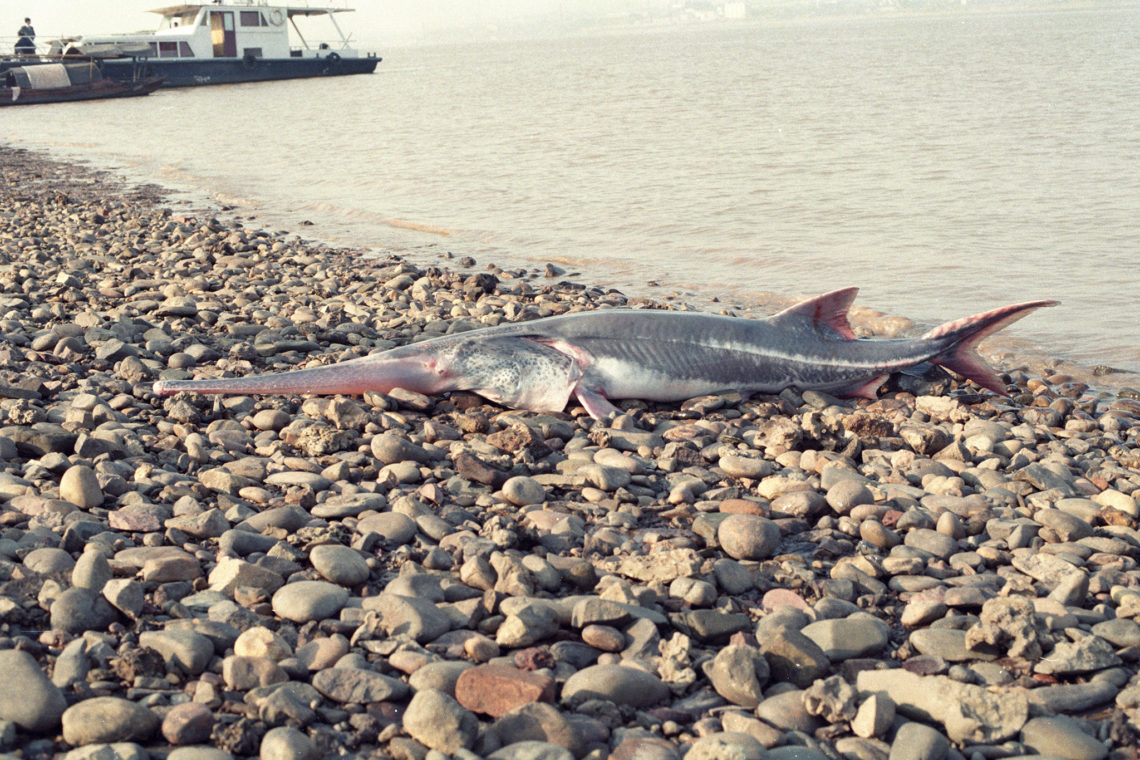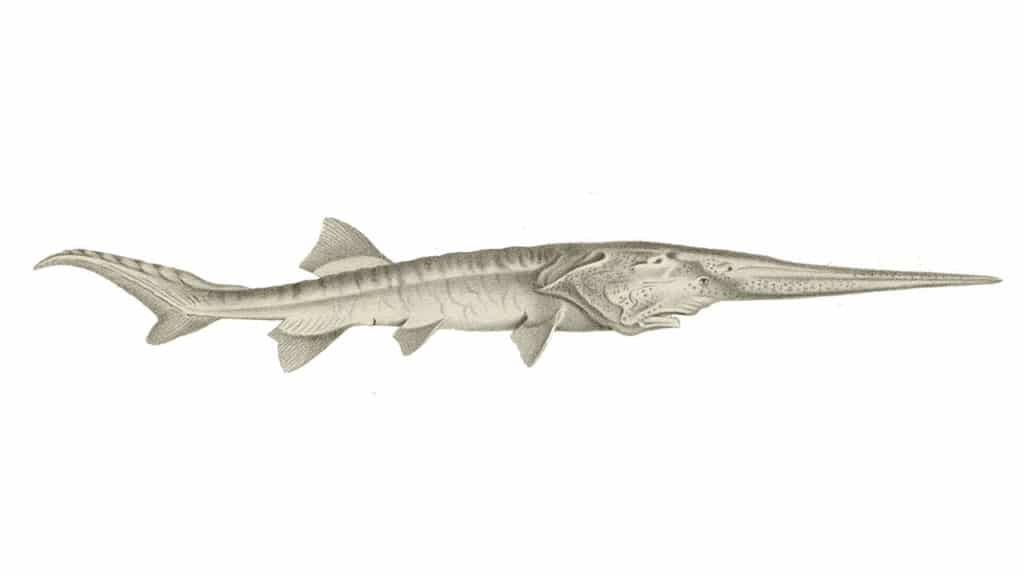
A dismal start to 2020: The Chinese paddlefish extinction
A dismal start to 2020:
The Chinese paddlefish extinction
The Chinese paddlefish, Psephurus gladius, was once commonly found in the Yangtze River known as the third longest river in the world. The freshwater fish could reach up to 7 metres in lenght.
A new scientifc paper by Zhang et al. (2020) has confirmed the species state of extinction and reveals that it was once harvested at a rate of 25 tons per year on average, in the 1970s.
Not a single paddlefish specimen had been found during a survey running from 2017-2018 that found 332 fish species. The extinction of the paddlefish has prompted even more concerns over the health of the river’s ecosystem: 140 fish species reported in the past were not found during this survey, many of them considered highly endangered.
With the last individual sighted in 2003, the extinction of the species is estimated to have occured as early as 2005. The main factor behind the species disappearence is said to be the construction of dams, isolating individuals and preventing them from successfully breeding.
No living captive individual or living tissue of the species currently exists to spark hope for resurrection. On a, hopefully, more positive note, the species’ extinction has the potential to capture worldwide attention and trigger conservation measures that may still be able to save critically endangered species such as the Yangzte river dolphin (Lipotes vexillifer).
Whilst some species receive media attention, some silently decline towards extinction...
Bushfires in Australia have devastated hectares of unique flora and fauna, causing alarming declines in the distribution ranges of many species. A recent article has even declared that some species have lost almost their entire habitat range. The small geographical distributions of animals such as skinks, frogs, and other reptiles can be entirely lost by climatic events like these, threatening a species’ genetic diversity.

Herping in Northern Spain
You May Also Like

Borneo: The Kinabatangan River
19 September 2019
First Steps Towards Sustainable Living
27 March 2020


